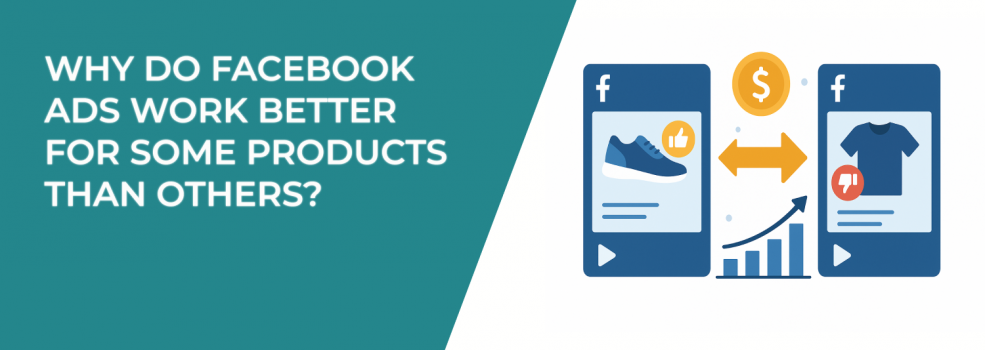Some advertisers crush it with Facebook ads. Others? They waste budget, time, and patience.
Why is that?
Not all products perform the same — and not all campaigns are designed to match how Facebook’s algorithm works. It’s not about the platform failing you; it’s about recognizing what it favors.
Let’s dig into what makes some products thrive and others flop.
1. Facebook Favors Scroll-Stoppers
Users don’t open Facebook to shop. They scroll. That means your ad needs to earn attention — fast. Facebook’s environment naturally favors:
-
Visually compelling products;
-
Emotionally resonant offers;
-
Low-friction purchases (think under $50);
-
Simple, benefit-first messaging.
Products like beauty tools, phone accessories, or kitchen gadgets are perfect. They look good. They’re easy to understand. You can sell the value in a 5-second video or image carousel.
If you’re promoting a service or high-ticket item, you’ll need to approach it differently — focus on educating, retargeting, or collecting leads first.
See examples in Facebook Ads for SaaS Companies: How to Build Customer Acquisition Funnels.
2. Some Niches Simply Convert Better
Let’s face it — some industries are just a better fit for paid social.
E-commerce? Fashion? Health and fitness? These verticals tend to generate high engagement because their products are inherently “social.” People comment, share, tag friends, and click impulsively.
But if you’re running ads for accounting services or B2B software, you’ll need a longer customer journey.
That doesn’t mean you can’t succeed — but you need to build layered funnels and tailor your offer. Start with a lead magnet or free consultation rather than pushing for a sale.
For tips on niche targeting, check out Facebook Ads for Niche Professionals: Lawyers, Dentists & More.
3. The Visual Advantage
Facebook is a visual-first platform. What performs well isn’t always the most useful product — it’s the one that looks exciting.
Bright colors, strong contrast, human-focused visuals, and UGC-style content win because they match the native feed experience.
This is one reason handmade and craft-based brands (think Etsy-style products) often punch above their weight.
Read about how to craft for these markets in Running Facebook Ads for Handmade or Etsy-Style Products: What Works Best?
4. Targeting Can Make or Break You
You might have the perfect product — but if it’s aimed at the wrong audience, expect silence.
Meta’s algorithm needs signals. Without data or with overly narrow targeting, your campaign might never leave the learning phase. If you’re stuck there, it’s a red flag.
Here’s how to handle it: Why You See 'Ad Set May Get Zero' on Facebook and How to Fix It.
And if you're working with niche audiences, precision matters even more. Interests aren’t always enough. Behavior-based signals and lookalike audiences are key.
This guide walks through how to reach those niche groups: How to Use Facebook Detailed Targeting to Reach Micro-Niche Audiences.
5. The Real Purchase Journey Matters
Some products lend themselves to instant purchases. Others need more convincing.
A subscription box for coffee beans? Easy sell. A $2,000 software license for enterprise teams? Not so much.
If your product has a longer sales cycle, don’t force it. Use Facebook to generate awareness, build email lists, or retarget high-intent users.
Match your campaign structure to where the buyer is in their journey — not just where you want them to be.
Final Thought: It’s Not Just About the Product
It’s the fit between your product, audience, offer, and creative that determines your success. Facebook rewards alignment. When all those pieces click into place, performance follows.
Before your next campaign, ask:
-
Would this product grab my attention mid-scroll?
-
Does it need more explanation than the average user has patience for?
-
Can I show — not tell — the value?
Get those answers right, and your product may become one of those that “just works” on Facebook

